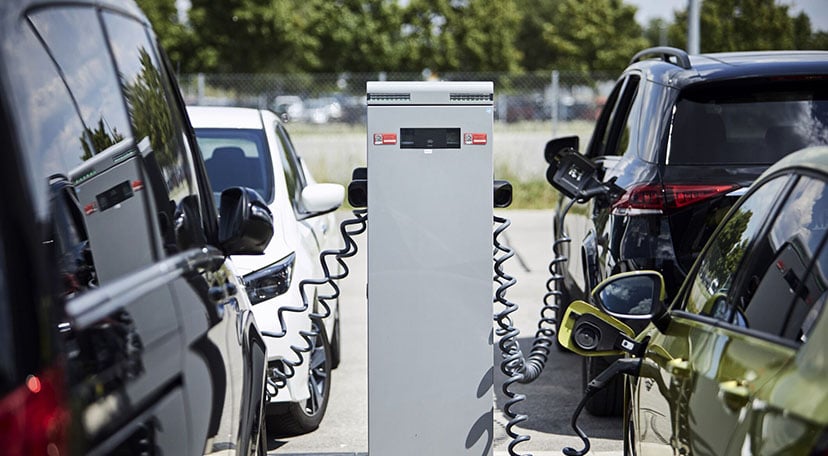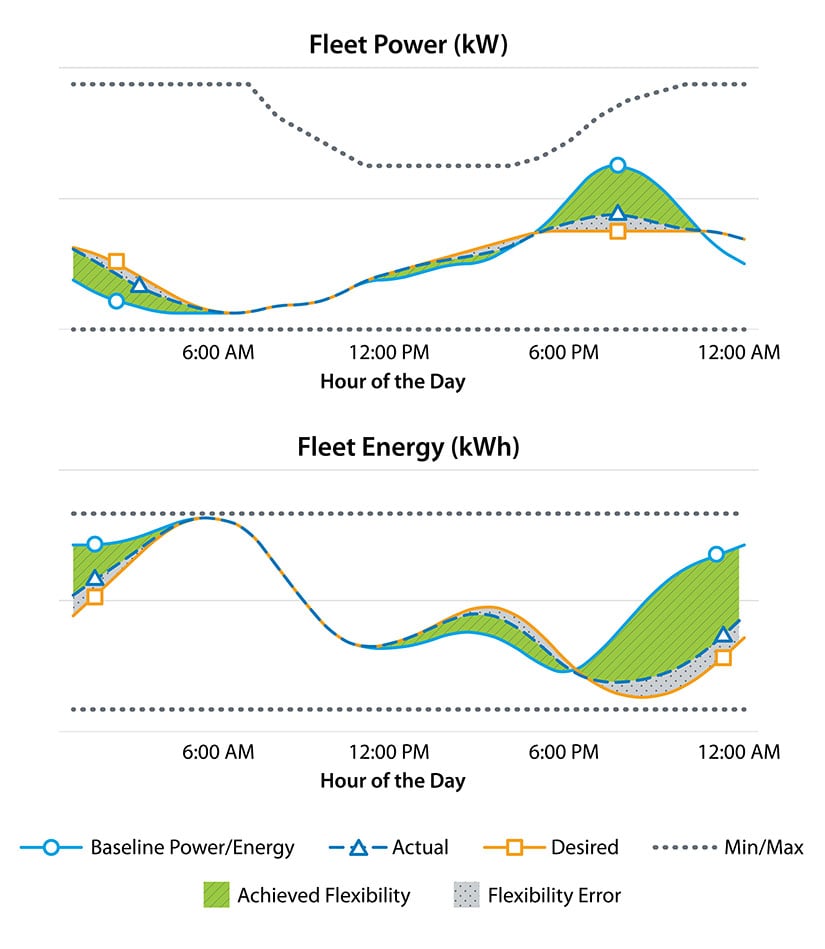FLARE: The Flexible Load Aggregator and Risk Estimator
NLR's Flexible Load Aggregator and Risk Estimator (FLARE) tool gives distributed energy resource (DER) aggregators a way to manage their fleet of flexible load resources and estimate their flexible capacity.

As more smart, controllable devices such as thermostats, electric vehicle (EV) chargers, and batteries are incorporated into the grid, gaining an understanding of their impact on grid operations and electricity markets is a growing concern for utilities and grid operators.
Developed by the National Laboratory of the Rockies, FLARE is a new tool to help DER aggregators find demand-side solutions and participate in electricity markets by providing a path to better understanding the flexibility and risks for fleets of flexible resources.
How Does FLARE Work?
FLARE was created to help DER aggregators characterize their fleet's flexibility based on individual customers' preferences and operational constraints. It uses machine learning algorithms to forecast baseline load consumption and a “virtual battery model” to quantify the flexible capacity of the fleet.
Using stochastic optimization, FLARE calculates a forecast of flexible capacity that maximizes aggregator revenue while factoring in risks such as occupant behavior and grid conditions. It can also incorporate reliability constraints to meet compliance requirements. Once flexible capacity is needed, FLARE generates dispatch signals that are sent to individual devices.
FLARE uses historical load and market data to generate accurate flexible capacity estimates. The tool considers specific data requirements based on the types of DERs in a fleet and the markets or grid service programs available to aggregators. Those requirements include factors such as historical market clearing prices, energy consumption profiles, temperature setpoints, and customer preferences. FLARE can also incorporate external forecasts for market prices and weather.

What Outputs Does FLARE Create?
Using the above data, requirements, and variables, FLARE creates:
- A "virtual battery model" characterizing the flexible capacity of the fleet over time
- Optimal price/quantity market bids for DER aggregators to offer into various electricity markets or grid service programs
- Power or setpoint dispatch signals for individual devices that maximize market revenue or other objectives.
Future Development Plans
Ongoing development will apply FLARE to a wider range of use cases, including additional DER technologies and electricity market designs. Integration with a DER management system tool will enable FLARE to consider distribution system constraints and provide distribution-level grid services.
Contact
Share
Last Updated Dec. 6, 2025
